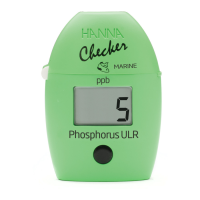69
ISE THEORY
An Ion Selective Electrode (ISE) is an electrochemical sensor that changes voltage with the activity or
concentration of ions in solutions. The change in voltage is a logarithmic relationship with concentration,
and is expressed by the Nernst equation:
where: E - the measured voltage;
E
o
- standard voltage and other standard system voltages;
a - the activity of the ion being measured;
S - the Nernst slope factor and is derived from thermodynamic principles:
R - the universal gas constant (8.314 J/(K⋅mol));
T - the temperature in degrees Kelvin;
F - the Faraday’s constant (96,485 C/mol);
n - the ion charge.
The slope may be positive or negative depending upon the Ion charge (n).
SPECIES
SLOPE
(mV/decade)
Monovalent cation +59.16
Monovalent anion –59.16
Divalent cation +29.58
Divalent anion –29.58
E = E
o
+ S log(a)
S =
2.303RT
nF
Activity and concentration are related by an “activity coefficient”, expressed as:
where: a - the activity of the ion being measured;
γ - the activity coefficient;
C - the concentration of the ion being measured.
a = γ · C
ADDITIONAL INFORMATION

